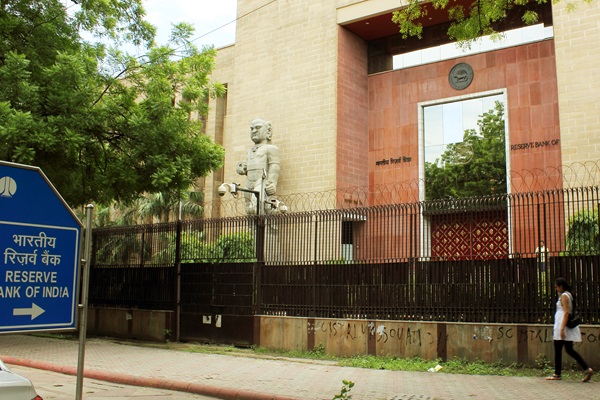.png)

Dhananjay Sinha, CEO and Co-Head of Institutional Equities at Systematix Group, has over 25 years of experience in macroeconomics, strategy, and equity research. A prolific writer, Dhananjay is known for his data-driven views on markets, sectors, and cycles.
May 22, 2025 at 4:02 AM IST
As speculation intensifies around a record-breaking dividend from the Reserve Bank of India to the Government of India, the optimism in markets is high. Bond yields are softening, liquidity is rising, and equity valuations are finding support. But beneath this surface calm lies a deeper unease: one that raises troubling questions about the blurred boundaries between fiscal management and monetary prudence.
This year’s estimated payout, rumoured to be over ₹3 trillion, significantly exceeds the approximate ₹2.2 trillion budgeted for 2025-26. This has triggered euphoria in the market. Yields on 10-year government bonds have declined to 6.22% from 6.8% three months ago, reflecting hopes of reduced government borrowing and further monetary easing. Additionally, a surplus in banking system liquidity, driven by a decline in credit-deposit ratio and forex-related liquidity infusions by the central bank, has only reinforced the mood.
Yet, these gains hinge on a transfer that is neither structural nor sustainable. The government has increasingly leaned on the RBI to fill revenue gaps. The RBI paid ₹2.1 trillion to the government in 2024-25, nearly double the budgeted estimate. Even in 2018-19, a similar crunch had pushed the government to rely on ₹1.75 trillion from the RBI. Temporary income–not structural tax buoyancy–was used to shore up government finances.
In the fiscal gone by, the government started strong, with a 41% jump in net tax collections in the April-June quarter, largely because of deferred tax refunds and higher income tax receipts. But the momentum faded subsequently, decelerating to a modest growth of 3.6% for the rest of the year. The consequent fiscal tightening led to a significant slowdown in spending, including contraction in capital expenditure. Overall, the growth in government spending averaged just 3.9%, inducing a drag on the economy rather than a boost.
Income Reengineering
This year’s dividend story is underpinned not by interest income, which is the RBI’s core earnings, but by trading profits. As per our estimates, interest income is expected to decline to ₹1.7 trillion in 2024-25 from ₹1.9 trillion the previous year, driven by lower interest rates globally, softening Indian yields, and a reduced share of foreign currency assets following RBI’s forex interventions.
The lower interest income will likely be offset by a substantial ramp-up in high contingency fund provisioning at ₹1.63 trillion as the RBI is expected to ramp it up in line with the upper bound of the Jalan range.
Thus, the dividend payable to the government will almost entirely come from other income, driven by unprecedented currency trading. Trading profits are calculated based on the difference between the historical average buy price of INR/USD exchange rate and the current rate for dollars sold, amplifying gains in a depreciating rupee environment.
The RBI is estimated to have sold $396 billion and bought $354 billion in 2024-25—amounting to a churn of $740 billion, or 131% of total forex reserves. By comparison, the previous year’s total trade stood at just 58% of reserves. The resulting trading income is pegged at ₹2.25-2.5 trillion, up from 2.5% to 4.6-5.1% of foreign currency assets—the highest in over a decade.
This is a direct consequence of post-2019 changes to the RBI’s risk provisioning norms following the Jalan Committee’s recommendations. By shifting from a volatility-based to a balance sheet ratio-based approach–targeting risk provisions at 5.5–6.5% of total assets–the reduced contingency provisioning ratio has incentivised RBI to bolster trading profits for the purpose of sharing higher dividend.
At the peak of 2013-14, the risk provisioning ratio stood at 9.2% of RBI assets. And in 2023-24, the provisioning for Contingency Fund was cut by 67% to ₹428 billion to enable higher payout.
Structural Strain
The RBI’s increasing role in supporting the government’s fiscal management raises concerns about the central bank’s primary objective of price and financial stability, and exchange rate management. Aggressive forex interventions as a profit source to fund dividend payouts to the government may compromise the rupee’s ability to reflect its true market value. It also risks greater market volatility if future gains fall short or if the rupee appreciates, limiting trading margins.
The high churn in forex reserves indicates significant market intervention. While this has yielded short-term gains, sustaining it could stretch the RBI’s balance sheet. Meanwhile, high dependency on these profits could disincentivise the government from pursuing deeper tax reforms or improving fiscal discipline.
India’s fiscal fragility is hard to ignore. Public debt stands at ₹196 trillion for the Centre and ₹94 trillion for states. The inherent tax buoyancy is weakening amid a slowdown in productive sectors. Capital expenditure has contracted, and revenue spending growth has moderated. The RBI’s aggressive dividend strategy may provide short-term relief, but the structural risks—from fiscal dominance to inflationary pressures—are mounting.
The government’s increasing dependence on RBI dividend to meet fiscal goals reflects a concerning drift in India’s macroeconomic architecture. It blurs the lines between monetary independence and fiscal expedience, with consequences that may unfold gradually.
To generate higher profits, the RBI may have to allow further rupee depreciation or even more aggressive currency trading, both of which could stoke volatility. Markets may celebrate the short-term benefits: lower yields, more liquidity, and stronger equity performance. But the long-term costs, on credibility, stability, and policy clarity, are too significant to ignore.




